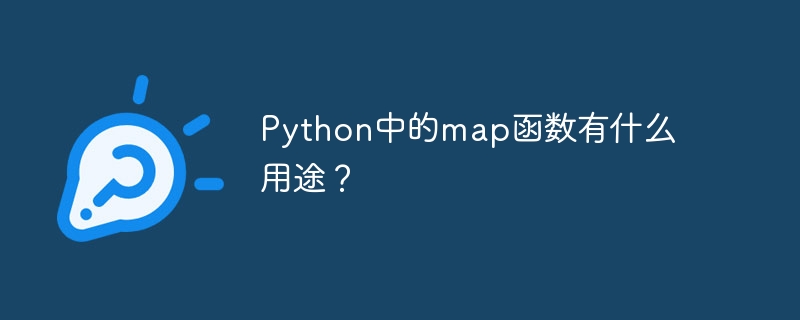
이 글에서는 Python에서 map 함수의 사용법을 배워보겠습니다.
Python의 map() 함수는 입력으로 제공된 반복자의 각 항목에 함수를 적용합니다. 리스트, 튜플, 세트, 사전 또는 문자열은 모두 반복자로 사용될 수 있으며 모두 반복 가능한 맵 객체를 반환합니다. map()은 Python의 내장 함수입니다.
function - 반복자의 사용 가능한 모든 항목에 적용될 함수가 포함된 지도를 제공해야 합니다.
iterator - 강제 반복 가능한 개체입니다. 리스트, 튜플 등이 될 수 있습니다. map() 함수는 여러 반복자 객체를 매개변수로 받아들입니다.
map() 메서드는 지정된 함수를 반복자의 각 항목에 적용하고 튜플, 목록 또는 다른 반복 가능한 맵 객체를 생성합니다.
함수와 반복 가능한 객체는 map() 함수의 두 가지 입력입니다. map()에 전달된 함수는 지정된 iterable의 각 값을 반복하는 일반 함수입니다.
다음 프로그램은 Python의 map() 함수를 사용하여목록의 각 요소에 5를 추가합니다 -
으아아아Python은 사전을 사용하여 보다 일반적인 연관 배열을 구현합니다. 사전은 키-값 쌍의 집합입니다. 중괄호 {}를 사용하여 정의됩니다.
사전은 역동적이고 끊임없이 변화합니다. 필요에 따라 변경 및 삭제할 수 있습니다. 사전 항목은 키를 사용하여 액세스할 수 있지만 목록 요소는 목록에서의 위치에 따라 색인으로 검색됩니다. 이것이 사전이 목록과 다른 점입니다.
사전은 반복자이므로 map() 함수 내에서 사용할 수 있습니다.
다음 프로그램은 Python의 map() 함수를 사용하여 사전의 각 요소에 5를 추가합니다. -
으아아아Python에서 튜플은 요소가 쉼표로 구분되고 괄호로 묶인 객체입니다.
다음 코드는 lower() 및 map() 함수를 사용하여 튜플의 모든 항목을 소문자로 변환합니다.
으아아아map()을 filter() 및 reduce()와 같은 기능적 도구와 함께 사용하면 반복 가능한 객체에 대해 더 복잡한 변경을 수행할 수 있습니다.
어떤 경우에는 반복 가능한 항목의 입력을 처리하고 입력에서 불필요한 항목을 제거/필터링하여 다른 반복 가능한 객체를 반환해야 합니다. 이 경우 Python의 filter()가 현명한 선택입니다.
filter() 함수는 함수 반환 true를 충족하는 반복 가능한 입력 항목을 반환합니다.
함수가 전달되지 않으면 filter()는 식별 함수를 사용합니다. 이는 filter()가 iterable에 있는 각 항목의 참값을 확인하고 거짓값을 제거한다는 것을 의미합니다.
다음 함수는 filter() 및 map() 함수의 조합을 사용하여 목록의 모든 양수를 필터링하고 해당 제곱근을 반환합니다. -
으아아아Python의 map() 함수를 사용하면 반복 가능한 객체에 대한 작업을 수행할 수 있습니다. Map()은 일반적으로 반복 없이 반복 가능한 객체를 변환하고 조작하는 데 사용됩니다.
이 기사에서는 여러 데이터 유형을 예로 들어 Python에서 map() 메서드를 사용하는 방법을 배웠습니다.
위 내용은 Python에서 map 함수를 사용하는 방법은 무엇입니까?의 상세 내용입니다. 자세한 내용은 PHP 중국어 웹사이트의 기타 관련 기사를 참조하세요!